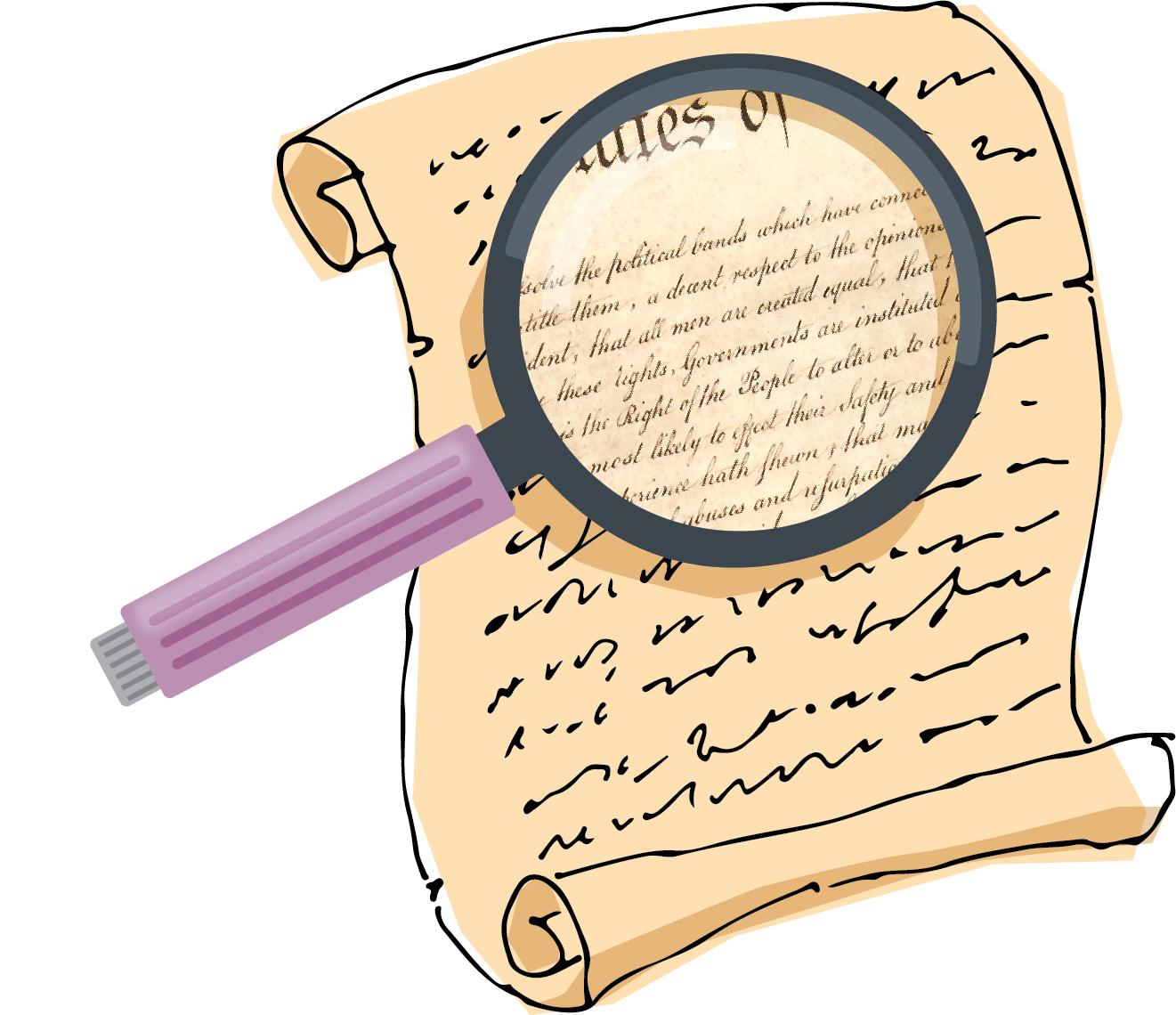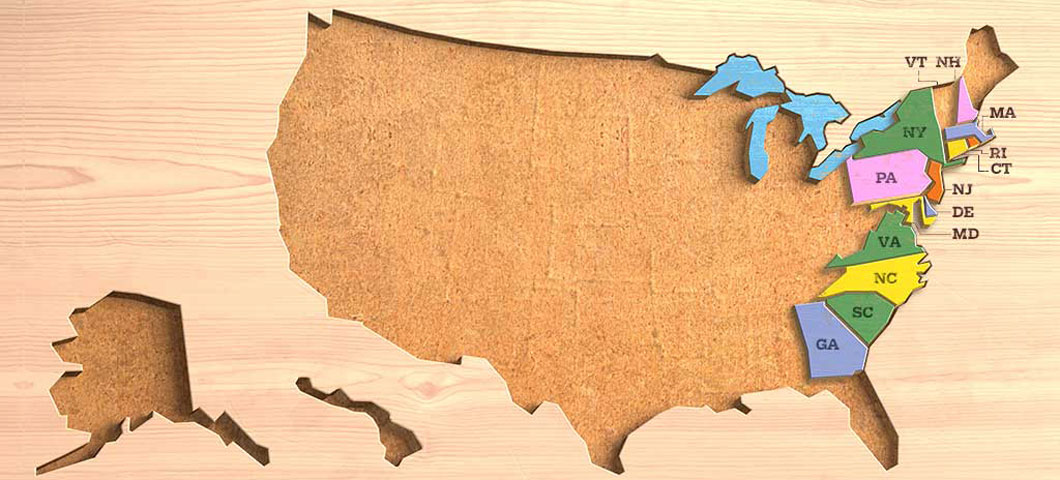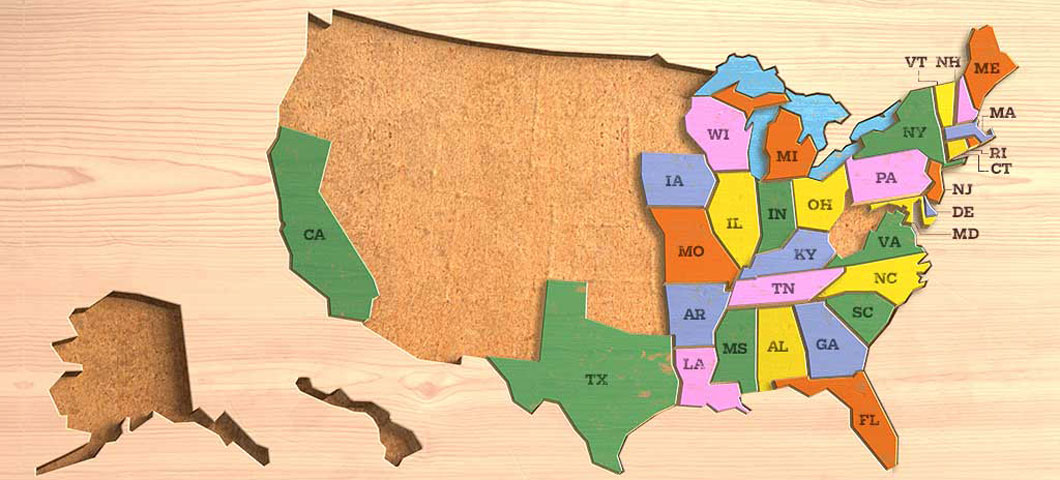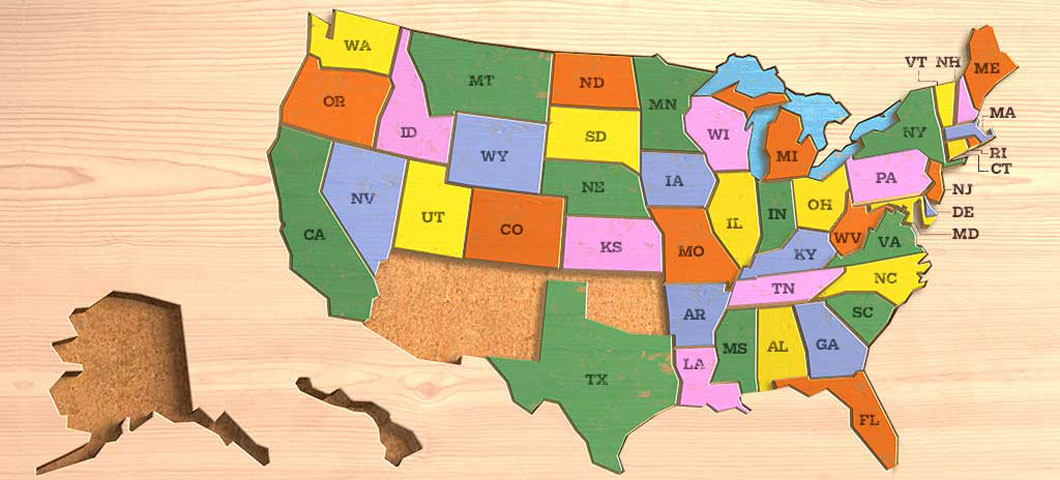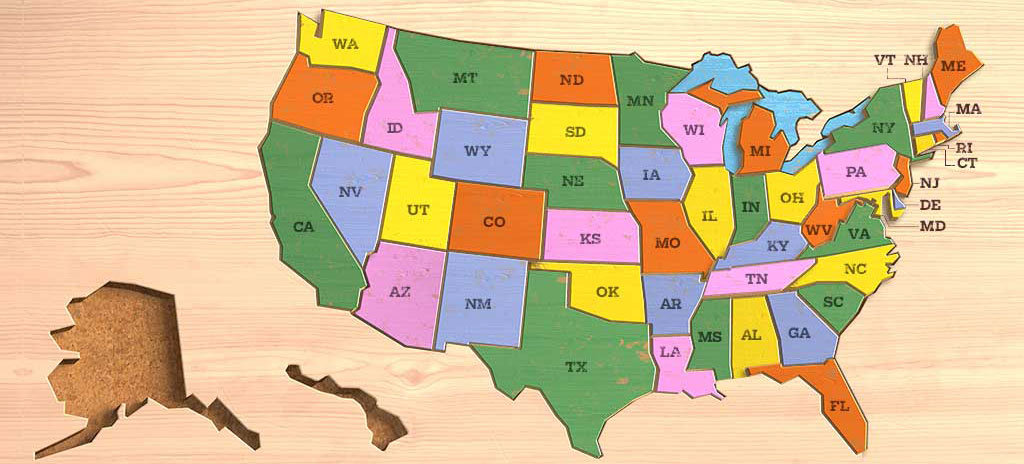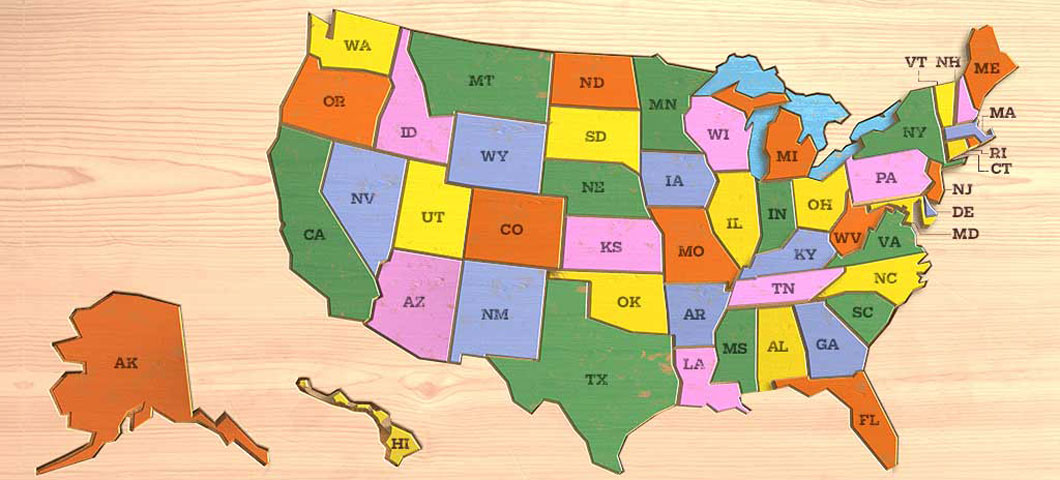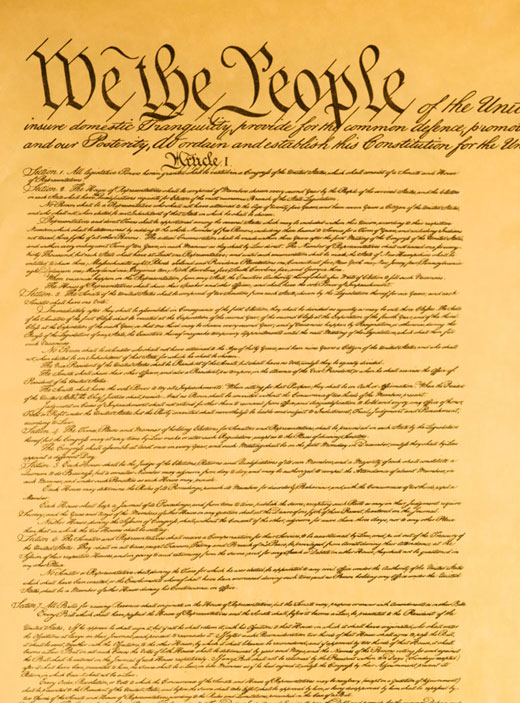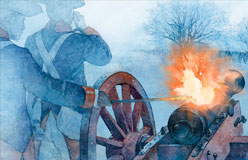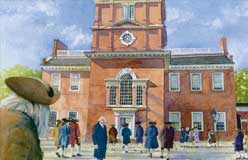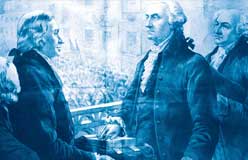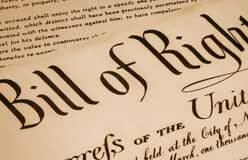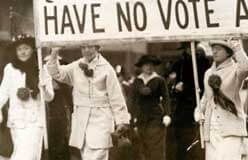On May 25, 1787, delegates from seven states met in Philadelphia. Their goal was to revise the Articles of Confederation.
Soon, delegates from five more states arrived. Of the original states, only Rhode Island did not send a representative. Some of the most famous names in America were there. Benjamin Franklin, at 80, was the oldest. George Washington ran the meeting. But John Adams and Thomas Jefferson weren’t there. They were in Europe as ambassadors for the new country. Patrick Henry, John Hancock, and Samuel Adams didn’t go to the meeting. Like some others, they didn’t want a stronger central government. Through the long, hot summer, the delegates debated many issues. In the end, they changed history.
Virginia came to the meeting with a plan. It called for two houses of Congress. Each member of Congress would have one vote. Under the Articles of Confederation, each state had only one vote. The plan also said the government should have an executive branch and a judicial branch. Congress would appoint the members of those branches. Soon the delegates realized that they were going way beyond changing the Articles. They were making laws for a new nation. The meeting had turned into the Constitutional Convention. ▼
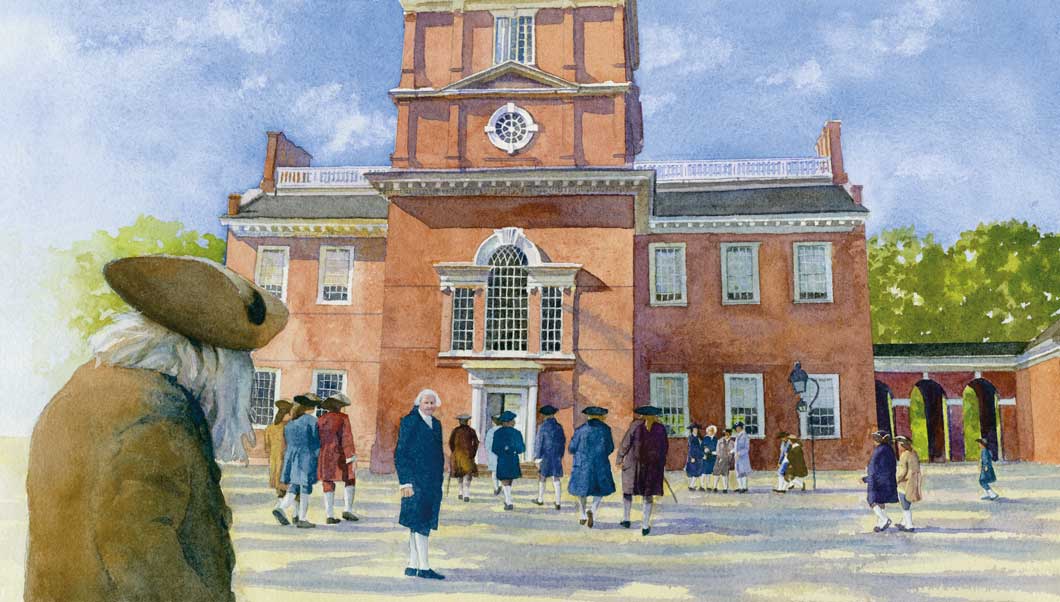
Delegates at Independence Hall in Philadelphia for the Constitutional Convention
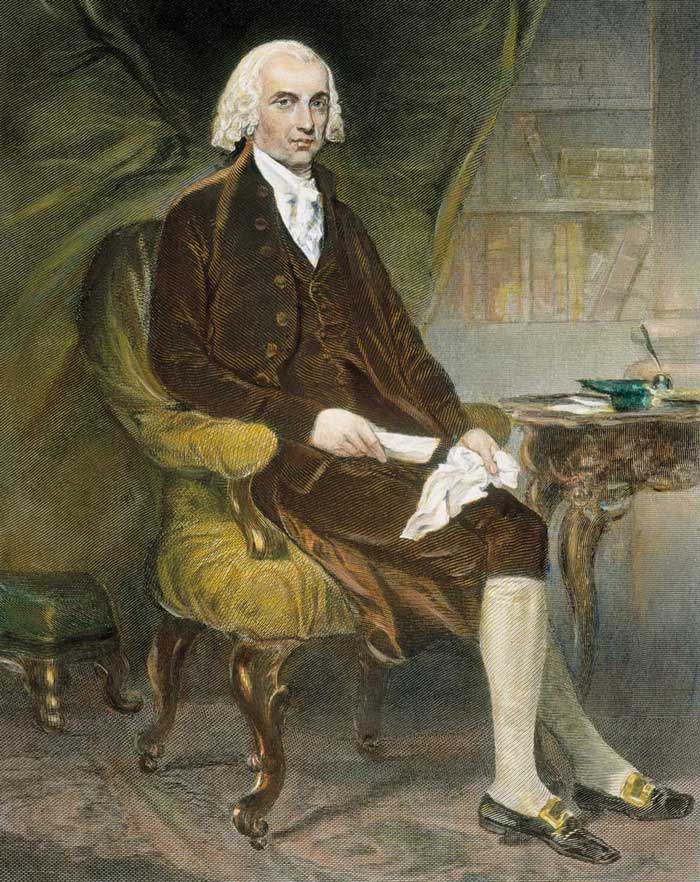
▲ No one worked harder for the convention than James Madison of Virginia. From France, Thomas Jefferson had sent him hundreds of books about government. Madison read them all. Before the convention, he made a list of the most important points to be covered. At the convention, he took detailed notes. Thanks to Madison, there was a written record of the meetings.
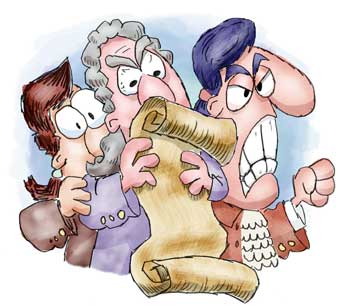
▲ Some delegates didn’t like the Virginia Plan. They thought the states might lose all their power to the national government. But others felt that arguments among the states were the source of the country’s problems. A strong central government would fix that.
The Virginia Plan said the number of Congress members from each state should be based on the state’s population. Population is how many people live in an area. Smaller states didn’t like that, but there was a solution. The Great Compromise said every state would have two senators in the Senate. A state’s population would determine the number of members it got in the House of Representatives.
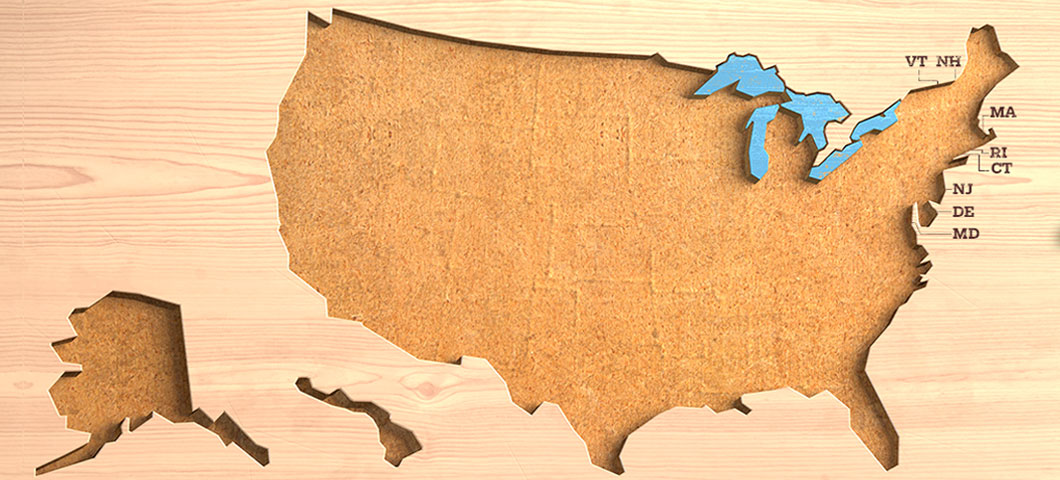
It took many years, but the United States grew from the original 13 colonies to a total of 50 states. The first states joined the Union in 1787, and the last to join were Alaska and Hawaii, in 1959. Click through to see what the U.S. looked like throughout the years.
By September, the delegates had agreed on what the new document should say. A committee put it in final written form. But several delegates had already left the convention. And three who stayed refused to sign it. On September 17, 1787, 39 men signed the final draft. Now it was up to the states. Nine states had to ratify it, meaning they had to agree with it. Then it could become the law of the land. ▶
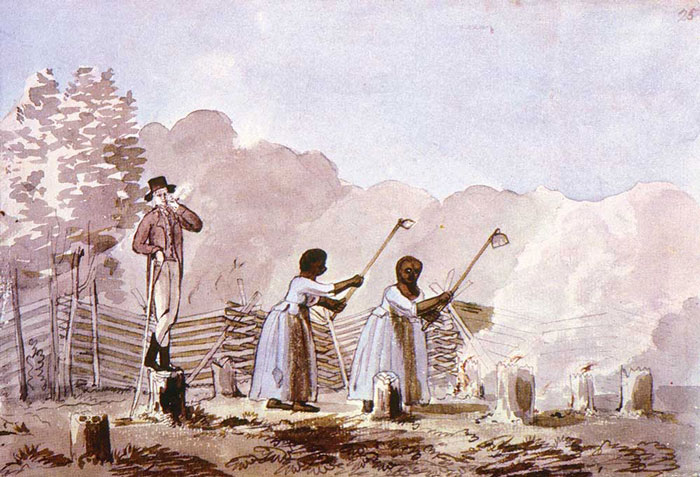
▲ The North and South disagreed about counting slaves as part of a state’s population. The South said yes. That would give southern states more Congress members. The North said no. Slaves were treated as property. Why should they be counted as people? Again, they worked it out. The Three-Fifths Compromise said that each enslaved person would be counted as three-fifths of a person.
REFLECTION
The Three-Fifths Compromise says that enslaved people weren’t considered full human beings equal to whites. Yet, the Declaration of Independence says that “all men are created equal.” Reflect on the inconsistency in these two ideas. Who were the “men” the Founders were thinking of? Who weren’t they thinking of?
